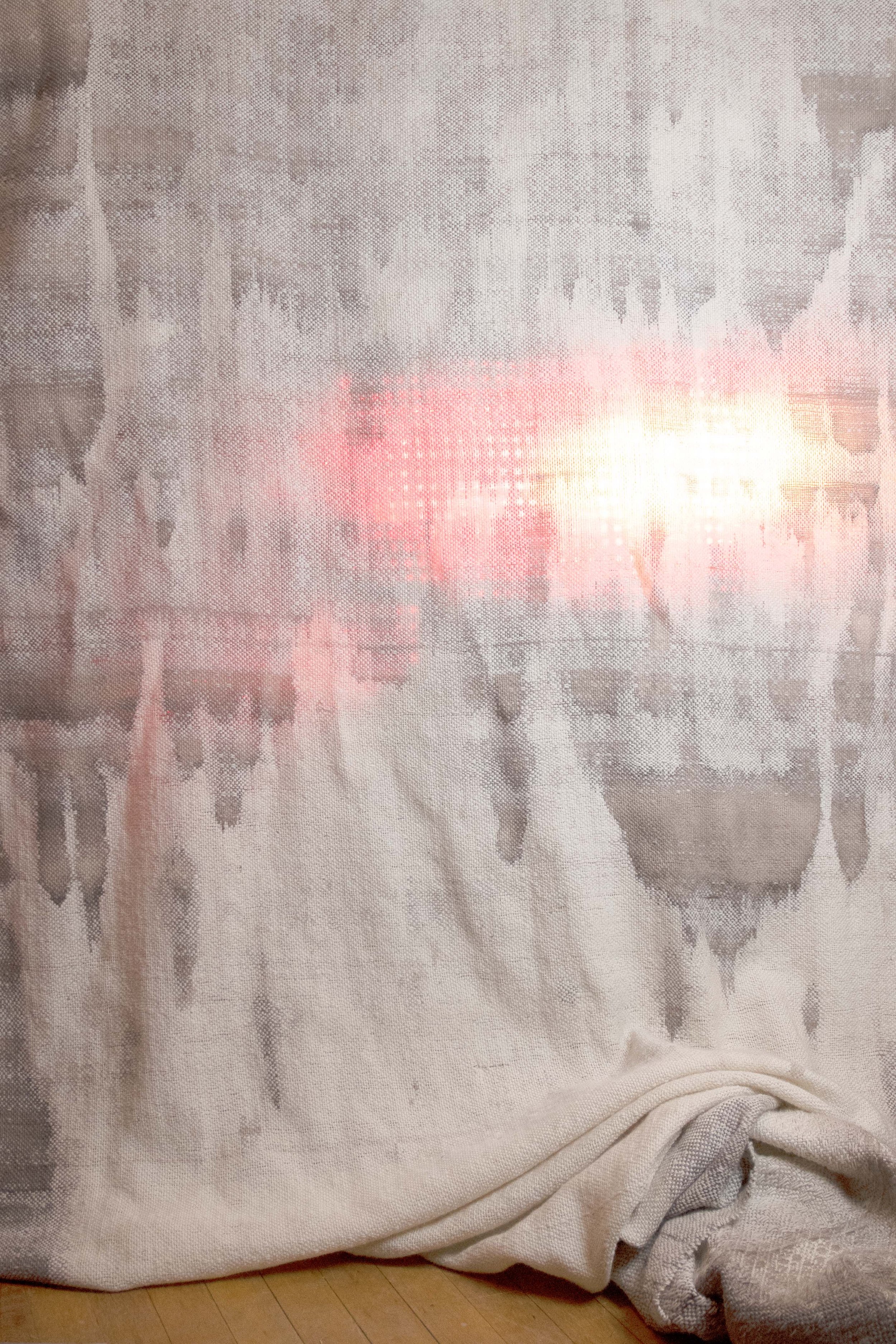Descrying Tapestry
The Descrying Tapestry is an interactive wall hanging that integrates art, craft, and technology. Visitors are encouraged to discover the bird sighting patterns of Iowa visitors by pressing the touch screen mounted to the base of the piece.
Descry verb (used with object),de·scried, de·scry·ing.
to see (something unclear or distant) by looking carefully; discern; espy:The lookout descried land.
Many of our favorite songbirds breed, live, and migrate to/from the Boreal Forest, only passing through Iowa seasonally. The Boreal Forest spans from Northern Minnesota across much of Canada. As their breeding habitat is destroyed, the population dwindles and the chance of viewing the likes of a Yellow-bellied Flycatcher in our backyard diminishes. As I painted these many birds for the Junk Mail Migration painting series, I was inspired to convert the bird sighting data into a large-scale interactive tapestry where viewers could descry the history and future of birds visiting their backyard ecology.
I took the leap in the fall of 2021 and applied for the grant that would make this project possible. And now I’m honored to say: This project was made possible by an Iowa Arts Council Grant, the National Endowment for the Arts, and data from the Cornell Ornithology Lab’s ebird project. Now complete, it’s making its way around the midwest!
Making the Tapestry
How was it created?
Over 20,000 yards of wool, a gallon of walnut dye, 4800 LEDs, microcontrollers, and custom PCBs went into the construction of the work. The LEDs were inlaid into the weaving while on the loom by Kristin M Roach (yep, I did that) and then soldered together and programmed by my partner Jason Shaw (yes, he’s pretty great).
What is being shown by the heat maps?
Sightings of the birds right here in the state of Iowa displayed by month/year. The data source is eBird — a Cornell Ornithology citizen science project. The center of the tapestry is approximately the center of Iowa.
How was it made?
Check out the process of refinishing my loom & warping it.
Getting started weaving. Here I am working at the loom. One of my favorite parts, the fiber running through my hands.
The loom refurbishing took March – April of 2021. The weaving process took from May – September. The whole piece, while it looks like two panels, is actually one continuous warp that is over 20 feet long.
The LEDs were woven directly into the fabric.
Over 20,000 yards of yarn and 4800 LEDs are woven together to create this work.
Jason wiring it all together after it came off the loom.
With a passion for problem solving, lighting, and electronics; Jason took up the challenge of how to convert data into a large illuminated panel. He wrote custom software and designed PCBs for the project. More information on the tech side coming soon. I need to drill him for the details.
The insides exposed before we secure it to the hanging support.
In order to work on the electronics, we moved the whole work out of my home studio and into our public-ish workspace above Little Woods Herbal. While letting the piece lay open, we had a special Open Studio event where local friends new and old could stop by and see what had kept us so busy for the past year.
Currently at the Neal Smith National Wildlife Refuge’s Ding Darling Gallery, the tapestry will continue to migrate from community to community with short stop-overs in Ames.
You can see the ongoing tour schedule & details about how to bring it to your community here.
Support provided by the Iowa Arts Council, a division of the Iowa Department of Cultural Affairs; the National Endowment for the Arts; and partnering host institutions.






